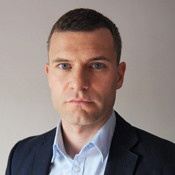They are poor neighborhoods in Buenos Aires called villas. The government says there are 38 of them. But for the most parts these hidden slums are off the political agenda, and in some cases they’re literally left off the map.
Correspondent Joel Richards visits some of these hidden cities in Argentina where violence is high and urbanization low.
He talks to some community members who are trying to bring awareness to the villa’s problems and give voice to the voiceless. These villas, or favelas or shanty-towns, are home to millions around the continent. They’re informal settlements that have been built up over decades, with little state control and no access to public services. The population in them has reached a historic peak in the decade since the country’s economic crash.
Follow The Spring Projects on This Website and on Twitter

Argentina’s “hidden cities” begin to see the benefits of social inclusion
They are poor neighborhoods in Buenos Aires called villas. The government says there are 38 of them. But for the most parts these hidden slums are off the political agenda, and in some cases they’re literally left off the map. Correspondent Joel Richards visits some of these hidden cities in Argentina where violence is high and urbanization low.Joel speaks to journalists at a publication called Garganta Podero, where many writers come from the villas themselves. He also speaks to radio show hosts trying to help. They describe how residents from the slums are treated like second-class citizens. The efforts of the community members are not only providing the hidden cities with more visibility, they are leading to a new maps being made to include the villas and infrastructure improvements like new roads, streetlights and homes getting computer access and computer lessons.
All of this is making Buenos Aires a city where social inclusion is finally becoming a reality. According to Argentina’s 2010 census the population of the villas in Buenos Aires doubled in nine years even though the city population grew by only nine percent. The lack of affordable housing and lack of public policies led to protests that lasted for months in the city’s center. Demonstrators hoped to highlight the problems facing villa residents, many of them immigrants from Paraguay, Bolivia and Peru.
 CGTN America
CGTN America

